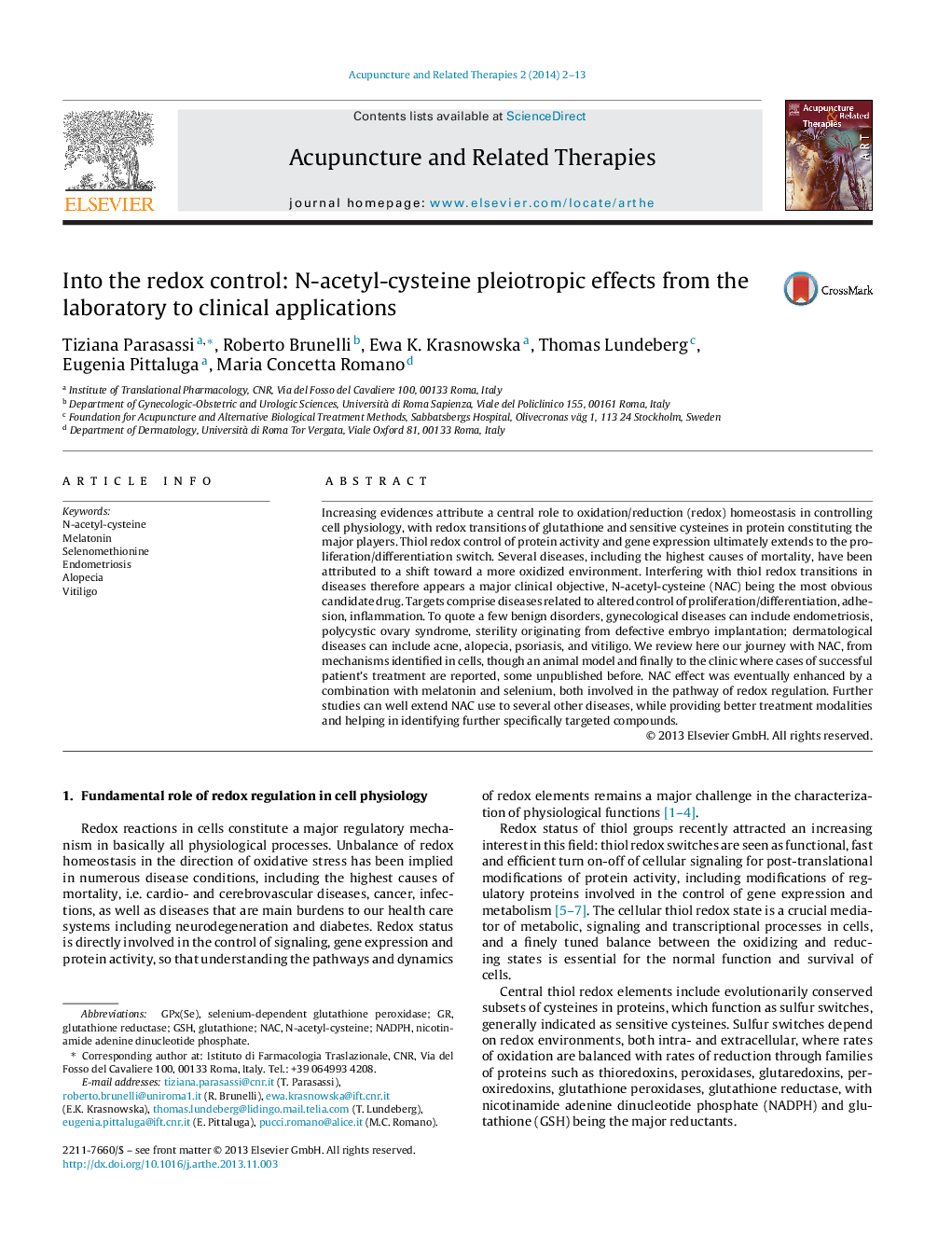| Article ID | Journal | Published Year | Pages | File Type |
|---|---|---|---|---|
| 2613904 | Acupuncture and Related Therapies | 2014 | 12 Pages |
Increasing evidences attribute a central role to oxidation/reduction (redox) homeostasis in controlling cell physiology, with redox transitions of glutathione and sensitive cysteines in protein constituting the major players. Thiol redox control of protein activity and gene expression ultimately extends to the proliferation/differentiation switch. Several diseases, including the highest causes of mortality, have been attributed to a shift toward a more oxidized environment. Interfering with thiol redox transitions in diseases therefore appears a major clinical objective, N-acetyl-cysteine (NAC) being the most obvious candidate drug. Targets comprise diseases related to altered control of proliferation/differentiation, adhesion, inflammation. To quote a few benign disorders, gynecological diseases can include endometriosis, polycystic ovary syndrome, sterility originating from defective embryo implantation; dermatological diseases can include acne, alopecia, psoriasis, and vitiligo. We review here our journey with NAC, from mechanisms identified in cells, though an animal model and finally to the clinic where cases of successful patient's treatment are reported, some unpublished before. NAC effect was eventually enhanced by a combination with melatonin and selenium, both involved in the pathway of redox regulation. Further studies can well extend NAC use to several other diseases, while providing better treatment modalities and helping in identifying further specifically targeted compounds.
